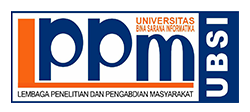Comparative Analysis of Machine Learning Model Performance for Classification of Edible or Non-edible Mushrooms
Abstract
Keywords
Full Text:
PDFReferences
Arslan, M., Azam, M., Ali, M., Hashmi, M. U., & Kousar, A. (2024). A Comparative Study of Machine Learning Methods for Optimizing Mushroom Classification. 08(01).
Ernanda, R., & Sumbari, C. (2021). The Effect of Individual Environmental and Entrepreneurial Behavior Factors on Performance of Oyster Mushroom Farming in Payakumbuh. Jurnal Galung Tropika, 10(1), 98–109.
Fathurrohman, R., S, M. F., Cahyono, S. M., & Abdillah, D. F. (2024). Data Mining Pada Klasifikasi Jamur Menggunakan Algoritma C .45 Berdasarkan Karakteristik Morfologi Mushroom. 4(1), 29–38.
Frencis Matheos Sarimole, & Ridad Diadi, R. (2022). Klasifikasi Jenis Jamur Menggunakan Ekstraksi Fitur Glcm Dan K-Nearest Neighbor ( Knn ). Jurnal Informatika Teknologi Dan Sains, 4(3), 286–290. https://doi.org/10.51401/jinteks.v4i3.1996
Haksoro, E. I., & Setiawan, A. (2021). Pengenalan Jamur yang Dapat Dikonsumsi Menggunakan Metode Transfer Learning pada Convolutional Neural Network. ELTIKOM : Jurnal Teknik Elektro, Teknologi Informasi Dan Komputer, 5(2), 81–91.
Harneni, L., Jauhari, C. K., Hia, R. R., P, N. K., M, M. A., H, M. Z., N, M. E. A., Rizal, M., Lestari, M., & Septiani, N. W. P. (2024). Klasifikasi Jamur yang Dapat Dikonsumsi Berdasarkan Citra Menggunakan Pre-Trained Model Inception V3. JRKT (Jurnal Rekayasa Komputasi Terapan), 04(02), 169–176.
Hayami, R., Soni, & Gunawan, I. (2022). Klasifikasi Jamur Menggunakan Algoritma Naïve Bayes. Jurnal CoSciTech (Computer Science and Information Technology), 3(1), 28–33. https://doi.org/10.37859/coscitech.v3i1.3685
Made Susun, N. M. S. P., & Darsini, N. (2023). Mansoa alliacea and Allamanda cathartica Extract Formula for The Control of Stem Rot Disease on Soybean Plants. Jurnal Fitopatologi Indonesia, 19(2), 57–62. https://doi.org/10.14692/jfi.19.2.57-62
Özaltun, B., & Sevindik, M. (2020). Evaluation of the effects on atherosclerosis and antioxidant and antimicrobial activities of Agaricus xanthodermus poisonous mushroom. The European Research Journal, 6(6), 539–544. https://doi.org/10.18621/eurj.524149
Rahmadhani, U. S., & Marpaung, N. L. (2023). Klasifikasi Jamur Berdasarkan Genus Dengan Menggunakan Metode CNN. Jurnal Informatika: Jurnal Pengembangan IT, 8(2), 169–173. https://doi.org/10.30591/jpit.v8i2.5229
Rodríguez-Fernández, R., Fernández-Gómez, Á., Mejuto, J. C., & Astray, G. (2024). Machine Learning Models to Classify Shiitake Mushrooms (Lentinula edodes) According to Their Geographical Origin Labeling. Foods, 13(17). https://doi.org/10.3390/foods13172656
Samir, M., Darwis, H., Umar, F., & Korespondensi, P. (2023). Fourier Descriptor Pada Klasifikasi Daun Herbal Menggunakan Support Vector Machine Dan Naive Bayes Fourier Descriptor on Classification of Herbal Leaves Using Support Vector Machine and Naive Bayes. 10(6), 1205–1212. https://doi.org/10.25126/jtiik.2023107309
Villarroel Ordenes, F., & Silipo, R. (2021). Machine learning for marketing on the KNIME Hub: The development of a live repository for marketing applications. Journal of Business Research, 137, 393–410. https://doi.org/https://doi.org/10.1016/j.jbusres.2021.08.036
Yohannes, Udjulawa, D., & Sariyo, T. I. (2022). Klasifikasi Jenis Jamur Menggunakan Metode SVM dengan Fitur HSV dan HOG. PETIR: Jurnal Pengkajian Dan Penerapan Teknik Informatika, 15(1), 113–120. https://doi.org/10.35957/mdp-sc.v2i1.4451
Zatadinia, N., & Bhakti, H. D. (2024). Identifikasi Jamur yang Dapat Dikonsumsi dan Beracun Menggunakan Metode Logistic Regression. JATI (Jurnal Mahasiswa Teknik Informatika), 8(6), 11780–11785.
DOI: https://doi.org/10.31294/jtk.v11i2.26007
Copyright (c) 2025 Omar Pahlevi, Sriyadi Sriyadi

This work is licensed under a Creative Commons Attribution-ShareAlike 4.0 International License.
ISSN: 2442-2436 (print), and 2550-0120











